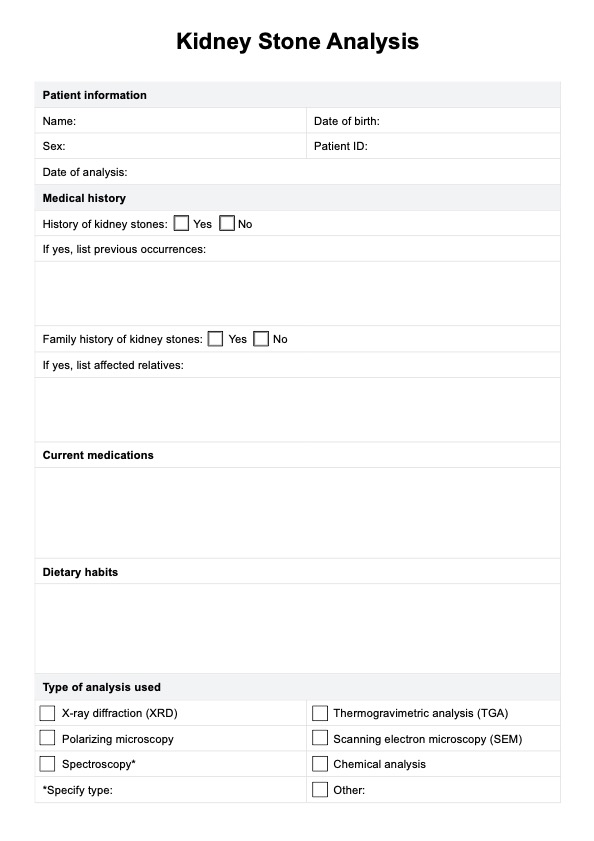Kidney stone analysis typically involves collecting a stone using a kidney stone strainer or after it has passed naturally or been surgically removed. A test identifies the stone's composition, which can provide insight into its cause and guide treatment. Once retrieved, the stone is sent to a laboratory for further urinary stone analysis, which involves a detailed chemical analysis.

Kidney Stone Analysis
Learn more about Kidney Stone Analysis. Download our free PDF template to record your patient's information and streamline clinical documentation.
Kidney Stone Analysis Template
Commonly asked questions
Several techniques are used for kidney stone analysis, including X-ray diffraction (XRD), infrared spectroscopy (IR), and scanning electron microscopy (SEM). These methods determine the stone's crystalline structure, surface morphology, and composition. In some cases, polarizing light microscopy is used to examine stone fragments. These techniques help identify the specific types of minerals in the stone, such as calcium oxalate, uric acid, or cystine.
Chemical analysis of kidney stones involves breaking down their composition into various minerals and compounds, such as calcium oxalate, calcium phosphate, uric acid, magnesium ammonium phosphate (struvite), and cystine. The proportions of these components vary, and the analysis helps to pinpoint dietary or metabolic factors contributing to stone formation, such as digestive and kidney diseases or a urinary tract infection.
EHR and practice management software
Get started for free
*No credit card required
Free
$0/usd
Unlimited clients
Telehealth
1GB of storage
Client portal text
Automated billing and online payments











